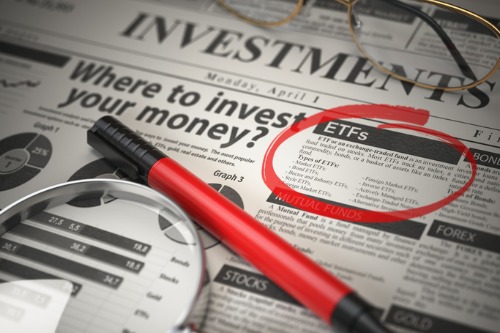Turning one of the structure's USPs on its head, is this the start of an active management fight back?

I’m late to the party when it comes to non-transparent ETFs. Like when you turn up stone-cold sober and your buddy Chuck, shirt undone, is already playing air guitar to Sweet Child O’ Mine.
But just as Chuck was laying the groundwork for his virtuouso performance in my absence, so firms and regulators have been clearing the way behind the scenes for the next wave of innovation in the ETF space.
First of all, what is a non-transparent ETF? Essentially, it is a new category that will allow asset managers to actively manage a fund, the way mutual-fund managers do, without having to disclose all of the fund’s investments every day.
The idea is that this protects their “secret sauce” and allows them to pursue their investment strategies without the risk of being thwarted by market reaction or imitators.
Recent Securities and Exchange Commission approval has propelled this issue into the spotlight. A quick Google search is all that’s needed to discover Precidian Investments now have permission to license its ActiveShares, actively-managed, non-transparent ETF structures. It already has agreements with nine investment firms – including Nuveen, Legg Mason, the Capital Group and BlackRock – but the feeling is the floodgates are poised to open.
My first reaction was confusion. Isn't one of the main attractions of an exchange traded fund its transparency, where holdings are laid out daily for all to see. No cloak-and-dagger tactics – what you see is what you get and, crucially, what you pay for.
Could this be the start of a fight back from active managers, who have seen investors flock to ETFs after getting frustrated by a perceived lack or performance and value. Just this morning, WP ran a story reporting how ETF sales dwarfed that of mutual funds in August. But if, as an investor, I am frustrated by poor returns from my active manager, why would I entrust him or her with the one vehicle where, like my Tim Horton’s Farmer’s Wrap, I have always known exactly what I’m getting.
Of course, what many of us conveniently forget is the size and prominence of the mutual fund industry. Despite countless articles on the ETF revolution, mutual funds still occupy a huge space, although you could argue their reputation has been damaged by cost and underperformance.
Asset managers are, apparently, banking on investors who are comfortable with less transparency in a mutual fund having no problem moving to an opaque ETF. Investors, though, will have to be convinced of its value before including it in their portfolio. At this stage, the pressure is on the active manager to outperform and prove that his or her “secret sauce” is better than, for example,a generic S&P 500 index-tracker. The cream will have to rise.
Of course, despite my initial skepticism, more choice is good in a competitive sense. As an investor, though, I’d have to really trust my advisor or want to see a solid track record before I allow a wall to be put up in front of my previously transparent investments.
I put these points to expert David LaValle and was intrigued to hear his thoughts. Now CEO of Alerian, a leading provider of energy infrastructure indexes, he has extensive ETF experience on the floor of the New York Stock Exchange, as NASDAQ’s Head of ETF Product Marketplace, and as the US Head of ETF Capital Markets at State Street Global Advisors.
He told me that “not fully transparent” is more accurate than “non-transparent” and that there are a number of “mousetraps” out in the marketplace currently seeking regulatory approval. Nextshares preceded Precidian with its approval – to less fanfare it seems – and LaValle should know, as he wrote a significant portion of the rule filing after choosing NASDAQ as its listing venue.
To have the market place reverse engineer a portfolio manager’s winning formula is obviously not viable for the PM if they want to get paid for their skills, LaValle stressed. He believes, therefore, that this new category, with all these players waiting in the wings, will be a force to be reckoned with by 2021, allowing asset managers to benefit from the ETF structure while still keeping their portfolio strategy proprietary.
He said: “The notion of the non-transparent, or not fully transparent, ETF wrapper is to provide much of the operational efficiencies that you realize in the traditional exchange traded fund. There is more frequent liquidity that can be traded throughout the course of the day, creation-redemption functions, some operational efficiencies and lower cost of actually administering the fund … all this while not divulging that secret sauce.”
He added: “Some of what has been discussed in the market is the question of, is this a solution for investors or is this a solution for asset managers? I'm of the opinion that it's both but having sat in the seat of selling ETFs for a very long time and having supported the broader education of the product, I think there's going to be a significant resource necessary to really educate the marketplace on what this is.”
Having encountered pushback from some of the world’s most sophisticated investors on the value of even a plain vanilla ETF exposure, LaValle admitted the adoption of another wrapper will take time and potentially add to investor confusion. He said it eventually comes down to due diligence, just like any other investment decision.
So the ETF expert and advocate says this is a good thing, and backs more innovation and choice. But he also said the proof will be in the pudding as to whether active managers can justify clouding the transparency – fully or partially.
It seems the Passive versus Active war has found another battleground.



